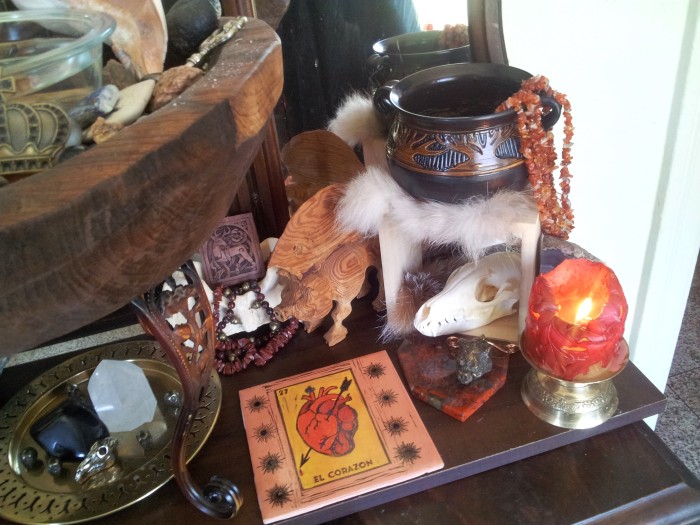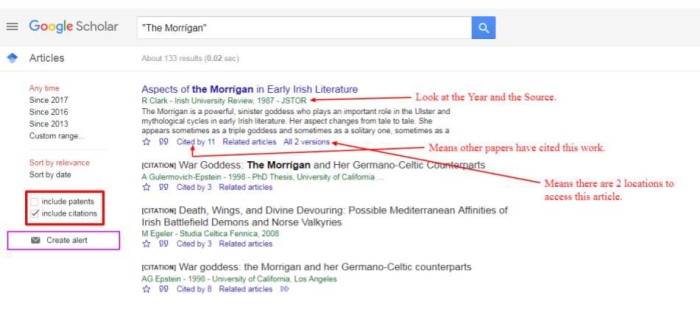Herein is the thing about being given a missive to write a series of blog posts by one of your beloved Gods, no matter the crazy, or how many obstacles that life throws at you, eventually the work bobs up again. Luckily, the Good God is a patient one and has been incredibly helpful and kind in recent times when I have needed support. But enough that, back to the task at hand!
When I last left you wonderful folks, we had talked about Learning being the starting point of connection to the Dagda and how that never ends. Which means you should still be on that Learning track, yes? Good.
We had also talked about the Work, and how after learning you then have to actually apply that into Doing. The “what” wasn’t as important as the act of breaking out of the theoretical and rolling up your sleeves to work. That my friends, is also an ongoing process, so I expect you are all merrily working a long.
But I know that those two things aren’t as satisfying an answer as some might be looking for in regards to making a connection with the Dagda. You might look at those two things and think that sort of spirituality or religion wouldn’t look any different from others on the outside. It’s too simple. Which to be fair, it is, but honestly that is the core of my devotions to most of my Gods and specifically to the Dagda. It’s not fancy. It’s not complicated. If I just had books, the internet, and living my life, that would be enough. I could still do it all with nothing on a desert island at this point, actually. Just with the knowledge and what I have learned thus far in my head. That’s honestly my goal. To be able to take my Gods and their teachings with me anywhere and without need of anything more than myself.
“But Branwen!,” I hear you say, “You are notorious for carting around all kinds of ridiculous accoutrement over hill and dale regardless of the weight!” You aren’t wrong. I do. Happily. Gladly, and I like to think with panache. But I am a firm believer in knowing the basics, know the roots, and THEN go hog wild and dress it up however you fancy. The heart has to be strong and in alignment, otherwise everything else is just glamour and shallow.
That being said, if you have made it this far, questing traveller, then you get to read me prattle on and on about all the trappings and shiny things that I too enjoy and take much reverence in, and do help in their way to build a strong connection.
Altars and Shrines – I want to be a Pagan damnit!
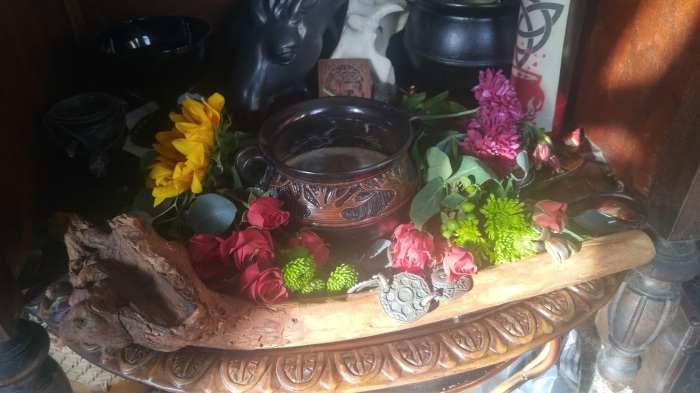
I admit it. One of the appeals of being a pagan or a polytheist, for me at least, is embracing an aesthetic that I have always been attracted to and just holds a deeper meaning when added to my beloved Gods. Our aesthetics may vary, but the power of props and surrounding yourself with the visuals and items that make your heart beat and your soul feel bigger can help you to feel more yourself, more powerful, and more in touch with the Gods.
One place to start with this is building an altar or a shrine to the Dagda in your home, place of work, or yard. “What is an altar? what is a shrine?”, you ask. Good question. Ask a different polytheist or pagan and you will get a different answer, but for the sake of this piece and really this blog in general, the following definitions apply (your mileage may vary):
Altar: Is a set space, usually flat (such as a table top, or shelf) where items associated with the Deity are artfully arranged to focus devotional energy and give the Deity the open invitation to come and be at home here. It is a place where offerings can be set, where items can be charged, and where additional spellwork or prayers are worked. An altar can be set up, taken down, rearranged, cleaned, and moved whenever needed. Some of the items on the altar might be the practitioners, some might be dedicated to the Deity, it’s all interspersed and mingled.
Shrine: Shrines can take many shapes. They can be contained in a open shadow box type construction, on a flat surface, portable, immovable, you name it. They tend to center around a statue or image of the Deity and are the focus of devotional energy for offerings and petitions to said Deity. Shrines undergo a ritual instantiation of the Deity’s energy into the iconography so they know they are always welcome here and the prayers and offerings are being made directly to them. Offerings and prayers can be left at the shrine and usually collect until a specific time when the shrine is cleaned and the offerings are ritual disposed of. Most items on a shrine are considered property of the Deity.
If either of these call to, you then go for it! They don’t have to be big and should fit into your lifestyle and needs. I don’t personally prescribe to any “You must have X, Y, Z, to be an altar”. My altars have changed and shifted depending on my moods, needs, and just where we are in the year. There is not a lot of historical evidence for what might have been on an altar in Ancient Ireland or even if altars were a household practice (unless I’m missing something, and if I am and you know of articles and information let me know!). But it is a practice that makes sense and has a cross cultural appeal, so one that I have incorporated into my practice.
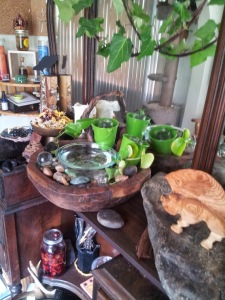 In that vein of making things work for you, you don’t have to have a specific altar for each individual deity. But maybe you want to give it a try and set up a space just for the Dagda when you are starting this new relationship, or deepening it. Even if it is just a specific corner of a larger altar. Go with what works for you.
In that vein of making things work for you, you don’t have to have a specific altar for each individual deity. But maybe you want to give it a try and set up a space just for the Dagda when you are starting this new relationship, or deepening it. Even if it is just a specific corner of a larger altar. Go with what works for you.
You might want to start with an item or image of an item that you particularly associate with the Dagda. A piece of artwork that really calls out to you and evokes those same feelings you get when you read his myths and stories.
My friend Marjorie, has a great practice of creating collages of different images that then help to evoke the different aspects of the deity. You can see things like this on Tumblr a lot. She prints them out and puts them in frames for the altar. Not sure where to get started? Feel free to look through my An Dagda pinterest board. Those are all images that stand out for me.
The other idea that stands out and is one that I immediately took to was getting a cauldron (or fifty), because of his association with the Undry, the cauldron of plenty, as one of his many treasures. Cauldron’s don’t have to come from a witch shop, don’t have to cost a lot of money, and really lots of vessels can become cauldrons if you decide to make them that. I suggest checking out your local thrift stores regularly for some finds. Usually they appear in the home decor or flower pot area. You can find some great brass ones. But do not be daunted, until a cauldron catches your eye a lovely deep bowl can easily serve as a cauldron. I have several wooden bowls that shapeshift from cauldron, to bowl, to well, as needed.
What other items jumped out at you in the myths and lore that you are reading?
It was important to me to have a representation of the Dagda’s club, the lorg mór. That’s not something that I felt I could just find in a thrift store or order online. So I went out to my local woods and spent some time looking for the right branch, and fashioned it into my own little mini club that fits on the altar to represent the lorg mór and the power of life and death. This neatly combines all the previous steps we talked about in devotions to the Dagda. I learned about the club, learned it’s name the lorg mór (working on being able to pronounce this regularly). Then decided I need to go out and create an icon of it. Went out in the woods, spent some time thinking and praying to him. Then spent the time and devotion making the icon. The act of creating an altar is an act of devotion. You can layer it with as much energy, love, and dedication as you feel called to do.
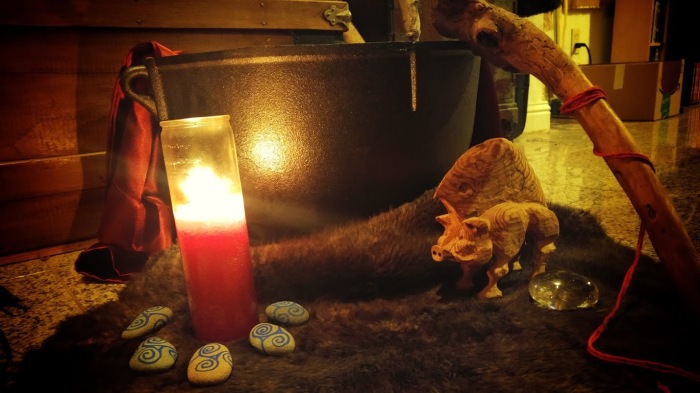 Some other associations that I make that you might look over for your own altars are listed below. I noted if things that are purely UPG (Unverified Personal Gnosis) and you can go ahead and ask me about anything you like:
Some other associations that I make that you might look over for your own altars are listed below. I noted if things that are purely UPG (Unverified Personal Gnosis) and you can go ahead and ask me about anything you like:
Cauldron
Irish Harp
The Club
Boars/Pigs
Horses
The color red (this is not solely the Dagda but UPG particularly for dark ruddy clay red) Red Jasper and Tiger Iron (UPG) Oak Trees
Sid in Broga, Brú na Bóinne, Newgrange (It should be noted that the Brú na Bóinne changes ownership to Aengus, his son in the lore but I still feel there is that familial connection) because of this UPG for the Newgrange spiral being associated with him
Oats
Bread (UPG)
So go out. Look around your house. Embrace your local thrift store. Patron your favorite artists. Create a little Dagda space in your life. Embellish it with the style and fashion that is you. For me that involves furs, leather, antlers, bones, horn, rocks, and metal items. But maybe you are a more clean lined modern aesthetic. Go for it. Then use it!
If it’s an altar, I will put the books that I am studying Irish culture and lore on it for the Dagda to give me a little insight into the. I put my jewelry that I would like blessed by him up there too. If an Oak tree gifts me with a leaf or acorn on my daily walk I set it up there in appreciation. I make sure to pour and give offerings.
It’s a place to come to and say prayers specifically for him. A focus point to seek guidance and do divination readings to get messages from the Good God. Keep it clean. Keep it well loved and hopefully it will serve you well in return.
Offerings – Connection through Giving
Above in the altar and shrine section, I mentioned that being a place to set out offerings, but what exactly is an offering? What is a good offering for the Good God? What do you do with it? All excellent questions. Let’s discuss below!
What is an offering?
It occurs to me now, that it would be interesting to go through and look to trace down the archaeological, folklore, and mythic, examples of offerings and offering practices in Ireland throughout history. Suffice to say I have not done that yet but it does make me happy to think about. In any event. Offerings is the practice of giving a gift of reciprocity or an act of propitiation to spirits and deities. It is a spiritual practice that has deep roots in many human cultures and is still seen in Irish folklore and wisdom in leaving milk and butter out for the Good Folks. Below I’m going to link to two excellent articles that cover more history and depth of what a offering is and I highly suggest anyone unsure or curious to go ahead and give those a read and then come back.
Morgan Daimler’s Offerings to Gods and Spirits
For me and my practice, offerings are how the connection with my Gods are maintained. It’s how we keep in touch. It’s how I show them I revere and am devoted to them. It’s how I ask for their blessings. It really is that simple.
What is a good offering for the Good God?
The good news is that if you have already started on the Learning and Working parts of this particular series then you, my friend, are already making offerings to the Good God. Congratulations!
That being said, the articles above talk a lot about tangible (largely food) based offerings, so let’s go over some options and ideas for that and then we will talk about the non-corporeal type offerings afterwards.
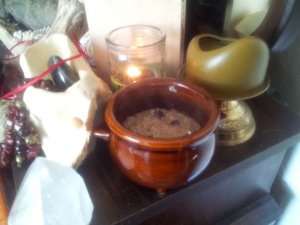 As you read in those articles, and if you are reading the lore and stories, I am sure you can imagine that whole milk or cream and Irish butter will never go amiss as an offering. Across the board really. Delving deeper into the stories you might glean some ideas for other offerings yourself. Things like, porridge, pork, baked goods, and stew, all come to mind.
As you read in those articles, and if you are reading the lore and stories, I am sure you can imagine that whole milk or cream and Irish butter will never go amiss as an offering. Across the board really. Delving deeper into the stories you might glean some ideas for other offerings yourself. Things like, porridge, pork, baked goods, and stew, all come to mind.
For the Dagda’s holy days, I usually try to make a feast meal that I think he would enjoy. Usually pork plays a central role, and from there we add just good well made, well loved food and flavor. Then I make sure he gets the first and best plate. It goes up on the altar and ta da! Offering served.
But making big meals is not really something a person can do everyday. Not that you have to give offerings everyday. There are other options that I use on a more regular basis that are more liquid in form.
If you are ok with alcohol, then a good beer, or a good whiskey, or good mead, make for a good offering.
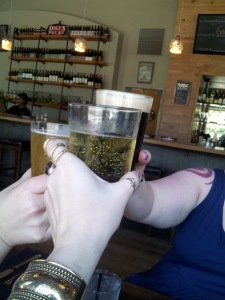
Food offerings aside, there are other tangible offerings that seem to me to alway be appreciated. These things include devotional crafting/arts. Poetry, calligraphy, artwork, sculpture. If you make something for him. With him in mind. That is a beautiful offering and can also make for wonderful altar additions.
What do you do with the offering?
This comes up the most in regards to the food and beverage offerings. It’s a question that I had starting out and something I’m still evolving in my practice.
For food items, I usually leave them overnight and then either put them in the compost if possible or put them in the bin if not. No one wants molding rotting food on the altar.
Now there are some folks who are in the “offer it to the Gods and then consume it yourself” camp, and there are some in the “if it is for the Gods it is for the Gods” camp. I gotta tell ya that I can see the argument on both sides. From what I can tell the evidence for Irish tradition leans towards the “What is for the Gods is for the Gods” but that doesn’t mean you can’t have your own practice. It means go research, look into the sources, figure out your practice and needs, talk to the Gods and do what is best for you.
I personally let food items be for the Gods, unless otherwise guided in the moment by inspiration. Beverages when out and about, such as at a restaurant and wanting to buy a drink for the Gods, can sometimes fall under the “I drink, you drink.” clause. Above all be respectful and be mindful, and for the love all: DON’T LITTER.
We have enough going on in climate change, and wrecking our ecosystems and natural resources. There are way more people in the world now, so some practices that were ok back in Ancient times now fall under the umbrella of Littering and please don’t do that. Lots of the food we eat today causes havoc on local wildlife. Not to mention making a mess in publicly shared nature spaces is just rude. So be smart. Think about the environment. Don’t litter.
Other devotionally created items can make great pieces for your altars or given as gifts to other devotees.
Non-Tangible Offerings
Food and libations make up a good portion of my offerings but by no means encompass all of them. Nor does tangible devotional creations. There is more that can’t be so neatly defined.
As I said at the start of this section, I consider my work to learn the lore and learn more about the Dagda and his people to be an offering. The completion of this particular blog series is also an offering to the Good God and seeing his will be done. If you are dedicating work to him, that in itself is a type of offering.
There are also offerings that come in the form of prayers or songs, these are things that I’ll cover in their own section, but I consider them offerings as well.
But let’s take a moment to think on the idea that the Dagda is a God of Ireland. His lands, his holy places, his people, are based in Ireland. Being a deity that takes great care in life and stewardship of his culture, it very quickly follows that what we can do to support the people and land of Ireland can be made as an offering to the Dagda. For me, that means that I try to make monetary offerings on behalf of the Dagda towards Ireland and her people. Supporting native Irish practitioners and artists. Supporting grassroots movements, heritage sites and environmental organizations helping people, places, and the culture on the ground.
A few of the people, and organizations that I have donated/patroned to:
Irish Peatland Conservation Council
Scealai Beag – Bard of the Dagda
Lora O’Brien – creating Authentic Spiritual Connection to Ireland
Taking this all to another layer. After we give offerings to the land and traditions that we are getting so much enrichment from, it then feels like the next step is to apply the teachings and lessons within our own community and local areas.
For my own practice, living in the Bay Area, something that has come up and just continued to grow in my connection with the Dagda is the complete utter unacceptable way that the homeless and poverty is being treated, or more accurately ignored and abused. I have a lot to say on this topic but suffice to say, that with the Dagda’s connection to plenty, abundance, and hospitality, he ain’t fucking pleased.
This has translated into my giving a monthly donation to my local food bank in his honor as an offering in the name of the Dagda. This also manifests in my more daily life of being aware and kind to the homeless, I give money directly to them when I can, and if I have food in my hands and am asked I will always give it. This is again is done as an offering to the Dagda.
Finding ways that you can acknowledge the teachings you have learned from the Good God in your everyday actions is a wonderful way to have offerings to stay meaningful and to give you something to grow on towards being a better human person.
What can you do to help? What do you want the Dagda to look at see you in action and be pleased with? These are good places to start brewing on!
There are two more parts that I intended to include in this section. Prayers and Finding Sacred Places. However this section has been sitting on my drive for several months, so I felt like I would just post it and let the other sections come at their intended time. So what I intended to be a 4 part blog will now be a 5 parter. Such is life.
I hope it is of some use!
Devotional Practice to the Dagda: The Call
